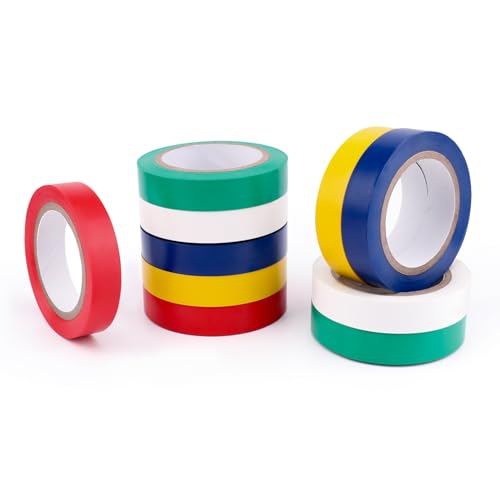Thank you all for your replies.
Conlok is the route I was planning to take, as others have said, it saves on threading and the likes, still going to need to do a couple of offsets, ill buy some old benders (oh'er) off of eBay.
Liking the idea of using an angle grinder for cutting the tube.
I have to admit that I'm not a sparky
but want to do a proper job, I've seen posts on YouTube from eFIXX that talks about "Grouping" and how many cables can be installed in a run of conduit, they make reference to the "site guide",
could anyone help with the pages I'd need to refer too?
eFIXX Video
As I mentioned above in the first posts, I'm installing two LED 60w panels
plus I would like to 8 double sockets, you can never have enough sockets as I have found to my cost in a recent extension we built. There are no big loads being used apart from an Oil filled rad for heating, other than that just small hand tools.
Again thanks for your responses.
Plus 8 Double sockets... So this is a lot more than just a couple of LED panel lights then?
The On-Site-Guide Section 7, (pages 73 to 102), gives basic summary calculation guidance for "Final circuits", and also refers to sections of BS7671 wiring regulations.
However, for the work you describe, I would have expected you need an understanding of many other sections as well;
e.g. Section 3 Protective devices, Section 4 Earthing & Bonding, Section 9 Inspection & Testing.
Appendix B Max permissible Earth Loop Impedance, Appendix E cable capacities of conduit & trunking, Appendix F Current capacities & volt drop for copper conductors, Appendix G Certification & Reporting, Appendix H Standard circuit arrangements for household and similar installations... etc.. etc.. etc...
(I am not going to start coping images of pages to post here on the forum.. Its quicker for you to either buy a copy
https://www.amazon.co.uk/Site-Guide-7671-Electrical-Regulations/dp/1839532270/ref=asc_df_1839532270
Or borrow a copy from the library.)
But more accurately you really need a comprehensive understanding of numerous sections of BS7671 wiring regulations with possible reference to the On-Site-Guide, which is only meant to be a quick ref summary of key points relating to smaller installations.. The On-Site-Guide is intended to provide additional explanations of some aspects of BS7671.. Not a comprehensive single point of reference to answer all electrical design questions instead of the 624 page copy BS7671 plus amendments!
If you "Want to do a proper job"....
What test equipment do you have access to for your dead testing, live testing and RCD testing?
What arrangements have you made for providing electrical certification?
As this sounds like some new circuits, and/or wiring crossing a garden, how are you providing your part-P building regs compliance notification?
What cable sizes have you calculated you need to meet volt drop requirements? as this could also affect what size conduit is needed?
The size of the loads is only one aspect of your calculations, the cable CSA and distance from the incoming supply terminations are also very important... (e.g. A shed at the bottom of a 40m garden is a very different wiring design than a shed 5m away across a driveway.)
I think we'd need more info than you have given so far, to assess if you plans are potentially a good design or a pile of pooh waiting to hit the fan if something goes wrong...
The key rule you MUST remember is that designing any electrical alteration or addition is NOT about making something work..
(As that is easy and any idjut can join a few wires to make something work, even without using YouTube or Mate-Down-The-Pub guidance).. But good electrical design is about ensuring that in the event of a fault the energy source is disconnected fast enough before any one is injured or killed! {remembering that electricity can kill a healthy adult in less than a second}.
































































